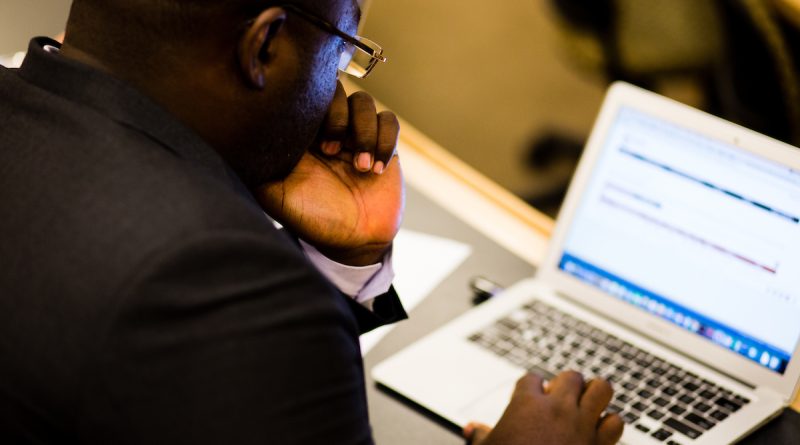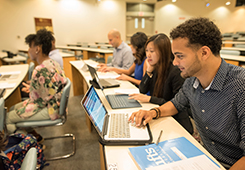Helping Students Learn from Lecture Capture
By Carie Cardamone, Associate Director, CELT
As more instructors use lecture capture technologies to record videos of class sessions, students are using these videos to catch up on what they missed and to study course content. Nearly all students believe that watching these videos enhances their learning. Unfortunately, research shows that passively watching a video can lead to over-confident judgements of their actual learning. What a student learns from a video depends on what the student is thinking and doing while viewing it. Just as when a student is in a lecture hall, reading a text, or studying in some other context, student learning is always dependent on their thinking and doing at the moment of learning.
Here are a couple of research-based resources which can help students learn more actively, whether during reviewing recorded lecture, or in any other activity:
- The Learning Scientists – 6 Habits of Highly Successful Students
- Stephen Chew’s series on How to Study
Here are some practices to recommend to your students:
- Pay Attention: Listen and watch lecture capture videos without distraction, at a time that you can focus on the content and think about the ideas you are encountering. Playing a video while focused on other tasks such as answering email, browsing online, or driving, can result in little new learning for the time invested in the activity.
- Pause the Video: After you encounter several ideas that are new to you, take a moment to consolidate what you’ve heard and connect it to other important ideas. During the pause you can take broader conceptual notes, look up unfamiliar terms, or organize the information in charts or concept maps. After the pause, you will have gained a new focus from which to learn more deeply about the next segment you watch.
- Quiz Yourself: Look for transition points in the video, and use them to pause and monitor your own learning by trying to recall what you just learned. Research shows that the impact of stopping to retrieve knowledge gained is one of the most effective ways to maximize learning. The very act of trying to recall information and ideas helps you integrate new knowledge into what you already know. It also improves your ability to accurately judge how much you know, meaning you can strategically devote study time to the most needed concepts.
- Focus on Key Information: Identify for yourself what your goals are in watching this video. Look for key learning objectives identified by your instructor at the beginning of the recording. As you watch, generate for yourself some guiding questions to help you focus on key content. Take notes that target this content. When using videos as a study tool, don’t just re-watch them in their entirety, but rather review specific segments which targeting the key learning objectives . Note that your learning objectives might be different than other students – as those with a deeper background might focus in on different content than those encountering ideas for the first time.
SEE ALSO
Flipping the Classroom to Encourage “Real Time” Learning in Medical Histology
Selected References
Brame, Cynthia J. “Effective Educational Videos: Principles and Guidelines for Maximizing Student Learning from Video Content.” CBE—Life Sciences Education 15, no. 4 (December 1, 2016): es6.
Carpenter, Shana K. “Testing Enhances the Transfer of Learning.” Current Directions in Psychological Science 21, no. 5 (October 1, 2012): 279–83.
Mayer, R. E. (2005). Cognitive theory of multimedia learning. The Cambridge handbook of multimedia learning, 41, 31-48.
McNulty, John A., Amy Hoyt, Gregory Gruener, Arcot Chandrasekhar, Baltazar Espiritu, Ron Price, and Ross Naheedy. “An Analysis of Lecture Video Utilization in Undergraduate Medical Education: Associations with Performance in the Courses.” BMC Medical Education 9, no. 1 (January 27, 2009): 6.
Morris, Neil P., Bronwen Swinnerton, and Taryn Coop. “Lecture Recordings to Support Learning: A Contested Space between Students and Teachers.” Computers & Education 140 (October 1, 2019): 103604.
Nordmann, E., Calder, C., Bishop, P. et al. “Turn up, tune in, don’t drop out: the relationship between lecture attendance, use of lecture recordings, and achievement at different levels of study.” High Educ (2019) 77: 1065.
Rodriguez, Fernando, Mariela J. Rivas, Lani H. Matsumura, Mark Warschauer, and Brian K. Sato. “How Do Students Study in STEM Courses? Findings from a Light-Touch Intervention and Its Relevance for Underrepresented Students.” PLOS ONE 13, no. 7 (July 31, 2018): e0200767.
Schacter, Daniel L., and Karl K. Szpunar. “Enhancing Attention and Memory During Video-Recorded Lectures.” Scholarship of Teaching and Learning in Psychology 1, no. 1 (2015): 60–71.
Trenholm, S., B. Hajek, C. L. Robinson, M. Chinnappan, A. Albrecht, and H. Ashman. “Investigating Undergraduate Mathematics Learners’ Cognitive Engagement with Recorded Lecture Videos.” International Journal of Mathematical Education in Science and Technology 50, no. 1 (January 2, 2019): 3–24.
Image credit: Student in Fletcher’s Global Master’s of Arts Program (Jake Belcher/Tufts University)




